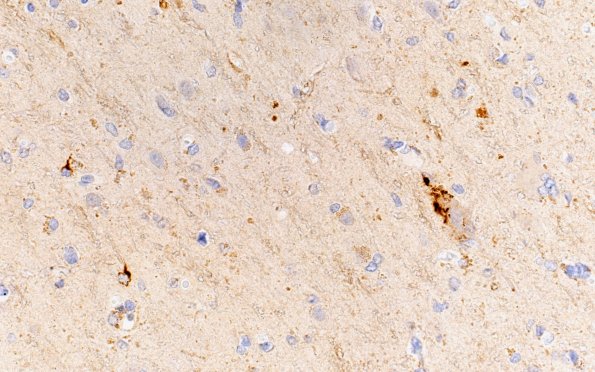Table of Contents
Washington University Experience | NEURODEGENERATION | ALS | 14F (Case 14) TDP43 N15 40X
Nonetheless, immunohistochemistry for phosphorylated TDP43 shows neuronal cytoplasmic inclusions at moderate density in all layers of the cortex, occasional glial cytoplasmic inclusions, and no significant dystrophic neurites. ---- Neuro Final Diagnosis: Frontotemporal lobar degeneration – motor neuron disease with TDP43 proteinopathy (FTLD-MND TDP) ---- Neuro Diagnosis Comment: Using the classification system of Mackenzie (PMID: 21644037), this pattern of TDP43 inclusions in the frontal lobe is consistent with early pathological changes of frontotemporal lobar degeneration (FTLD) with TDP43 proteinopathy (FTLD-TDP), type B. Together, the finding of TDP43 inclusions in the frontal cortex and spinal cord warrant the diagnosis FTLD/MND (motor neuron disease) with TDP43 proteinopathy (FTLD-MND TDP). This pattern of pathology is usually associated with an intronic hexanucleotide repeat expansion in gene C9ORF72 (2), which, with variable penetrance, predisposes individuals to ALS and/or frontotemporal dementia (FTD). In addition to the diagnosis of FTLD-MND TDP, this case shows evidence to support a diagnosis of “intermediate AD neuropathological change” using NIA-AA criteria Alzheimer's disease Neuropathologic Change (A2-3,B2C2)

